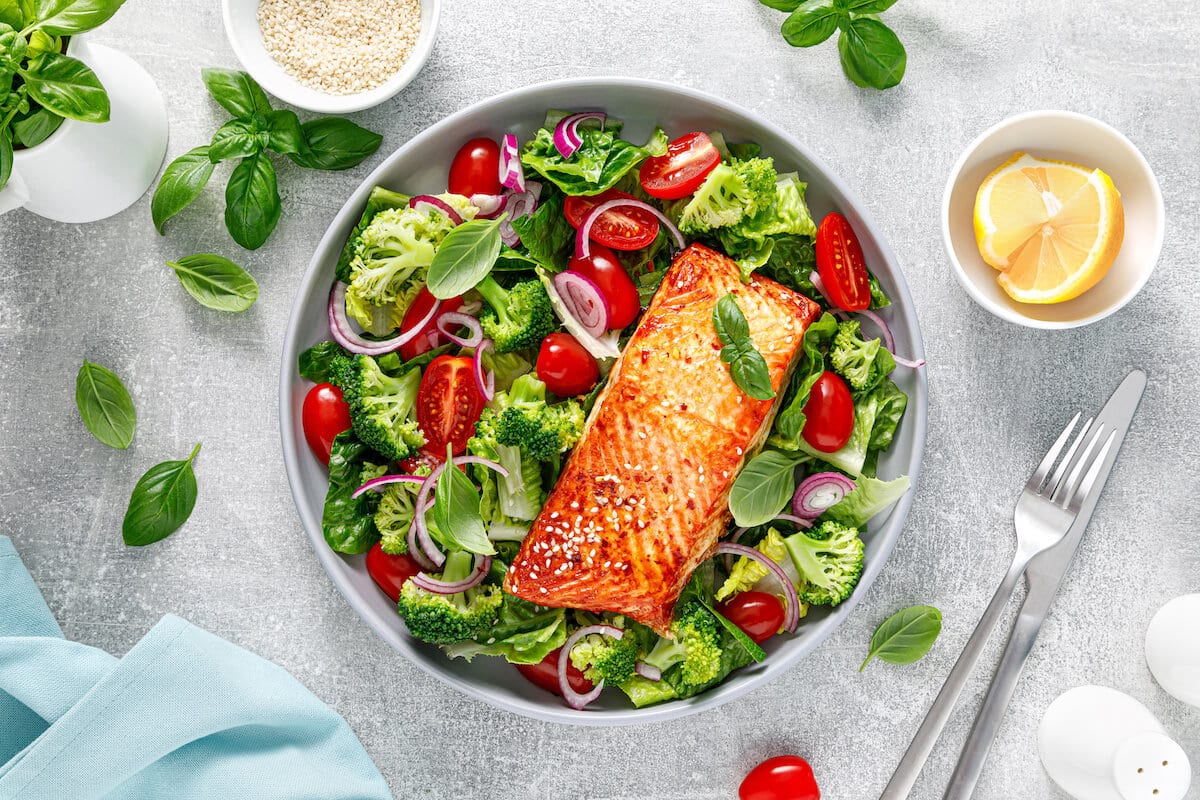
20 Dec 12 High-Protein, Low-Calorie Foods to Help Manage Your Weight
Your body is a finely-tuned machine, and if you look after it well, it will support you your whole life. Part of the tuning process is to get your protein intake right for your needs at any given time. For example, if your goals are weight loss or building lean muscle, focusing on high-protein, low-calorie food is a good idea.
Let’s clarify the role that high-protein, low-calorie foods play in your diet and how they can help you achieve your goals. We’ll also share some ideas for high-protein, low-calorie meals that are both nutritious and delicious.
Balancing Your Nutritional Needs
To operate at its best, your body needs a balanced, healthy diet composed mainly of whole foods. That means a meal plan with the right combination of macronutrients — protein, carbohydrates, and healthy fats. You also need plenty of fresh veggies and fruit to make sure your body gets all the vitamins and minerals it requires.
Carbohydrates provide your body with a readily available source of energy, supported by healthy fats. Protein carries out many vital functions, including helping to build your organs, bones, and muscle, amongst other critical elements of your body. It also boosts your immune system and is involved in processes like transporting nutrients and managing your body’s fluid, electrolyte, and pH balance.
If you’re trying to build muscle or lose weight, increasing the amount of protein you eat can be extremely effective. And keeping that protein as low-fat as possible will help to reduce calories, which is an important element of weight loss.
Benefits of a High-Protein Diet
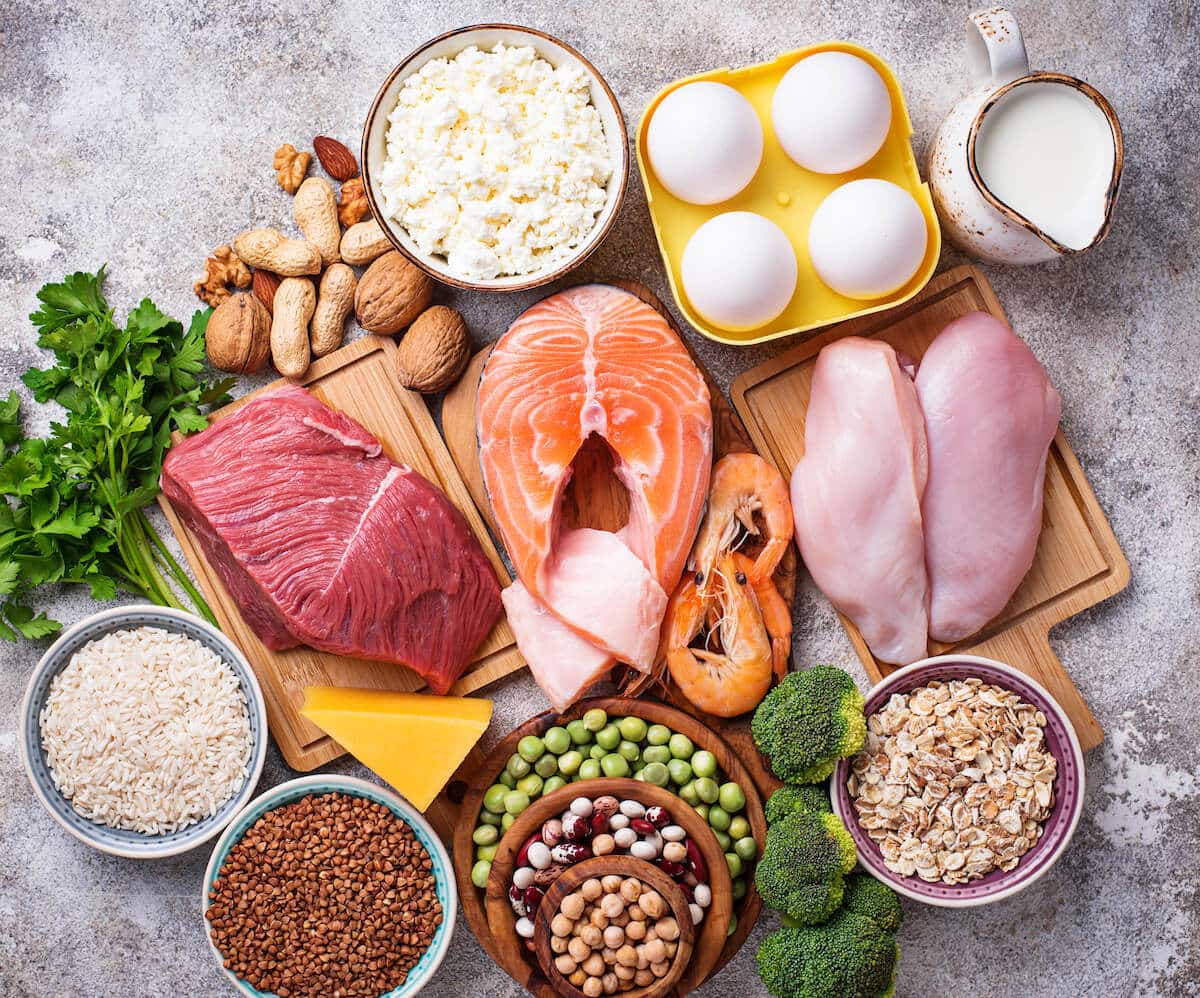
When you eat protein, your digestive system breaks it down into amino acids. Your body can make some amino acids on its own, but there are several — known as essential amino acids — that it can only get from your dietary protein intake. These essential amino acids, or EAAs, are then recombined into new proteins, which your body uses in different ways, including to build muscle and help with weight loss.
To Build Muscle
Lean muscle is essential for daily activities like walking, carrying your shopping up the stairs, and playing with your kids. It’s also necessary for weight loss because the more lean muscle you have, the higher your metabolic rate and the more calories you burn even while you’re not exercising.
To build lean muscle and strength, your body needs protein plus resistance exercise. Protein also helps to preserve your lean muscle when you’re restricting calories, so you don’t lose muscle instead of fat.
To Help With Weight-Loss
Many weight-loss diets leave you starving and desperate for all the foods you know you’re not supposed to eat, like sugar and saturated fats — which contribute towards obesity and conditions like high cholesterol and diabetes.
On the other hand, studies show that protein helps with weight loss in a healthy way. It not only gives your body the energy it needs when you’re reducing carbs or calories, but it also helps you feel full for longer. This means you’re far less likely to want to overeat at meals or snack on unhealthy food between meals.
How Much Protein You Need
An average, moderately active person needs around 0.8 grams of protein per kilogram of body weight every day. However, if your goal is weight loss, you should aim for between 1.6 and 2.2 grams per kilogram every day — and up to 3.4 grams per kilogram if you’re exercising intensively.
Note: If you’re unsure that a high-protein, low-calorie diet is right for you or if you have any health conditions, consult a professional like a Registered Dietary Nutritionist (RDN) before adding extra protein to your diet.
12 Best High-Protein, Low-Calorie Foods
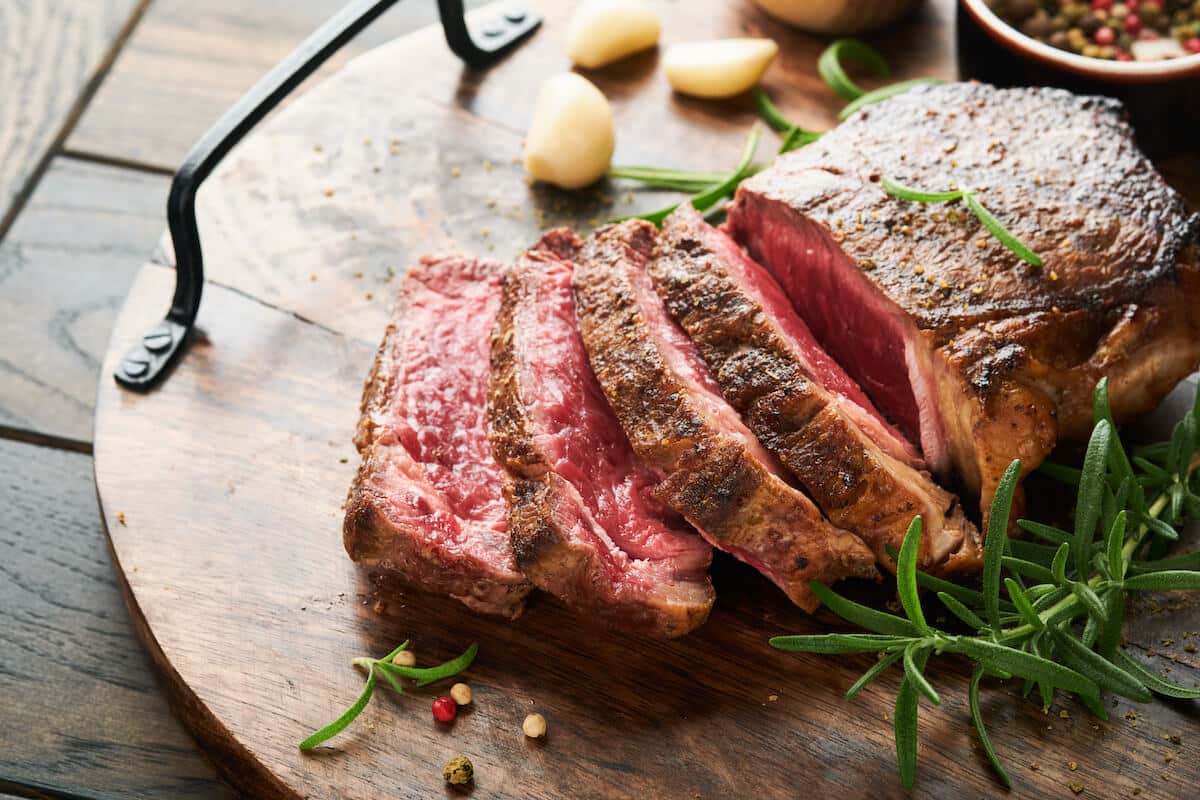
Now that it’s clear why eating more high-protein, low-calorie foods is good for you, let’s look at some protein-rich foods to help you achieve your health goals. It’s worth noting that there are different types of protein. Animal protein sources provide all the essential amino acids, while most plant-based options don’t (with a few exceptions). However, you can combine plant proteins to make sure you get all the EAAs over the course of the day.
These high-protein foods are easy to prepare. They’re also low in calories to ensure you get plenty of what you need and less of what you don’t.
1. Chicken or Turkey
Skinless chicken breast and turkey are excellent lean proteins, and you can enjoy them in many ways. Throw your roasted chicken or turkey into a salad, or add it to a stir-fry with plenty of veggies to up your vitamin and mineral quotient. Or boil it and shred it onto low-carb or whole-grain toast or rice crackers spread with mashed avocado, which is also high in protein and healthy omega-3s (although you do need to exercise some portion control as it’s relatively high in calories too).
2. Red Meat
While an excess of red meat has a bad reputation for increasing health conditions like cholesterol, type 2 diabetes, and cancer, if you choose well and cook it sensibly, it can be a healthy, high-protein, low-calorie food. Look for venison, lean beef, or pork loin (avoid the bacon) and grill, roast, or broil it rather than frying it. Serve with a salad rich in vitamins and minerals or high-protein vegetables like spinach, corn, or brussels sprouts.
3. Fish
Fish is another high-protein, low-calorie food you can serve in many ways. Choose fish like salmon, trout, tuna, or halibut because they’re rich in healthy omega-3 fatty acids, which support heart health, fight inflammation, and help to improve mental health. Bake or grill your fish with herbs and salt, and serve it with baby potatoes and broccoli, which are also both relatively high in protein. Or let it cool, then flake it into salads or onto pasta.
4. Eggs
Eggs are powerhouses of nutrients, containing protein, healthy fats, and many vitamins and minerals. They’re proven to increase satiety and reduce the desire to snack. Use them to make scrambled eggs or an omelet, hard or soft boil them, add them to salads, mash them onto toast, or poach them to top a stir-fry or shakshuka.
5. Low-Fat Dairy Products
Dairy products like cottage cheese and Greek yogurt pack a powerful punch of protein, as well as plenty of calcium to strengthen your bones. Choose plain yogurt rather than flavored (usually containing sugar), and add your own fruit, nuts, and perhaps a dash of honey for extra sweetness if you need it. Spread cottage cheese on bread, mix in some onion, garlic, and herbs and serve it with crudites, or just eat it by the spoonful.
6. Legumes
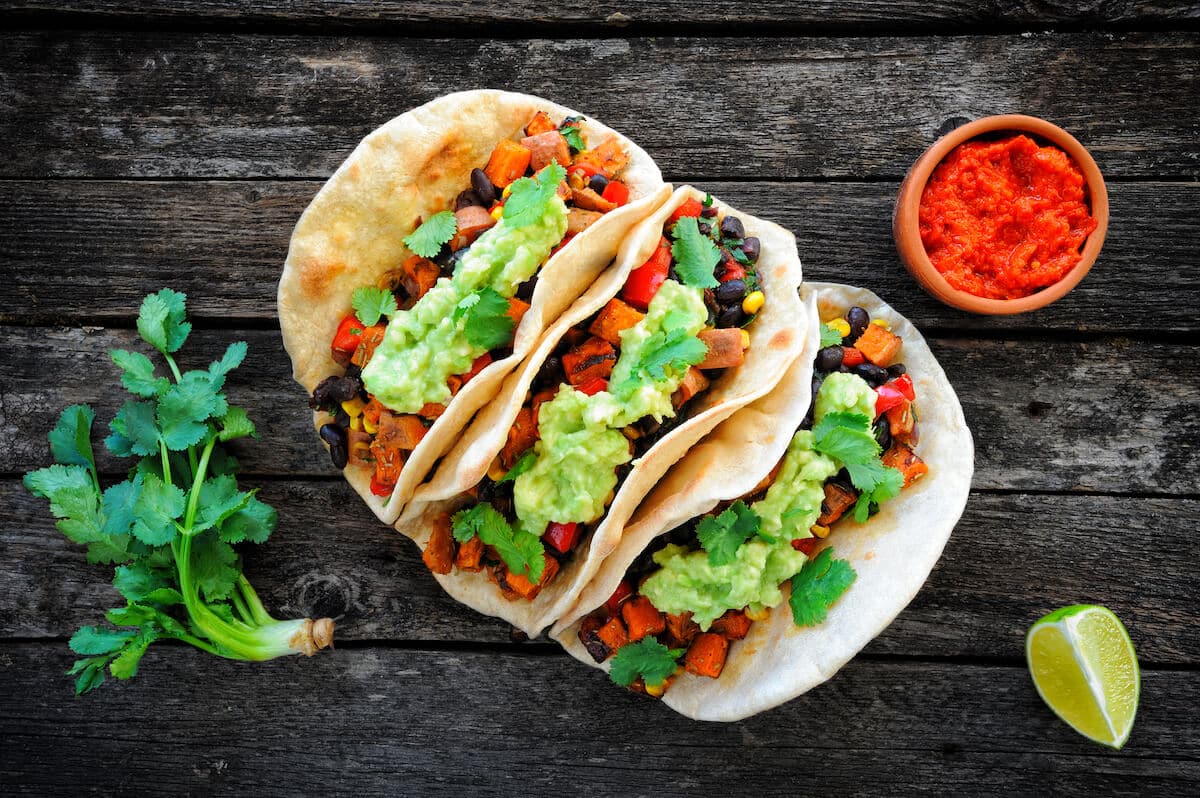
Legumes come in many forms, from lentils and lima beans to black beans and chickpeas. They’re great high-protein, low-calorie foods, and as a bonus, they add extra fiber to your diet to keep your gut working well. You can mash them into a dip with some olive oil and lemon juice, add them to veggies to make a delicious stir-fry, stew, or Buddha bowl, blend them into soups to up the protein content, or serve them with nachos or tortillas and salsa.
7. Soybeans
Even though soybeans are also legumes, they deserve a category of their own as the main component of products like tofu and tempeh. These have a completely different texture to the beans and, cut into chunks, can be used as a meat replacement. Note that tempeh is a slightly higher-protein choice than tofu, and it’s fermented too, which is excellent for your gut health.
8. Quinoa
Quinoa is often considered a grain, but it’s actually a seed. It’s exceptionally high in protein and many other nutrients and is one of the few plant-based proteins to contain all the essential amino acids. It’s also anti-inflammatory and high in fiber. Quinoa has a mild, nutty flavor and can be used in much the same way as rice or couscous, as a base for many different meals, from breakfast porridge to stews, stir-fries, and salads.
9. Chia Seeds
Speaking of seeds, many seeds, like sunflower, pumpkin, or hemp, contain protein, but chia seeds are in a class of their own, providing multiple nutritional benefits. Sprinkle chia seeds on anything from your breakfast oats or lunchtime gluten-free sandwich to your evening stir-fry. Or make chia pudding by adding the seeds to any liquid like almond milk or low-fat yogurt. Leave the mixture for an hour or two, or even overnight, and you’ll have a delicious and healthy base to which you can add fruits like blueberries — which are high in antioxidants — potassium-rich bananas, and your choice of seeds for crunch and extra nutrients.
10. Nuts
While a thick layer of peanut butter on your toast isn’t exactly low-calorie, a small handful of almonds, cashews, pistachios, or walnuts is absolutely fine and can help keep you satisfied. Avoid nuts roasted in oil, choosing raw or dry-roasted instead. Eat nuts as they come, or add them to salads, stir-fries, or rice dishes.
11. Oats
Oats are complex carbohydrates, but they’re also high-protein, low-calorie foods. Pre-prepared oats often contain sugar, so buy them raw and cook them yourself. Or make overnight oats by leaving them to soak up a liquid like yogurt or almond milk overnight. Then top them with fruits, seeds, and nuts for flavor and to add some crunch.
12. Protein Smoothie
While the bulk of your protein should come from whole foods, a protein powder supplement is an easy way to top up your intake. There are many different kinds, ranging from animal-based whey protein — note that whey protein isolate is lower in calories than whey protein concentrate — to plant-based options like pea, hemp or brown rice protein.
Make sure you choose a high-quality product that is USDA certified, like Ingredient Optimized ioWhey Protein or ioPea Protein. Ingredient Optimized products are proven to be more bioavailable than non-optimized protein supplements, and they promote increased muscle mass, strength, and recovery. Our ioPea is the first pea protein that rivals whey for effectiveness.
You’ll find Ingredient Optimized protein supplements in these partner products:
Add protein powder to smoothies or protein shakes, along with your choice of yogurt, kefir, or almond milk, fruits like bananas and blueberries, spinach or kale, nuts and seeds.
High-Protein, Low-Calorie Foods Help You Manage Your Weight
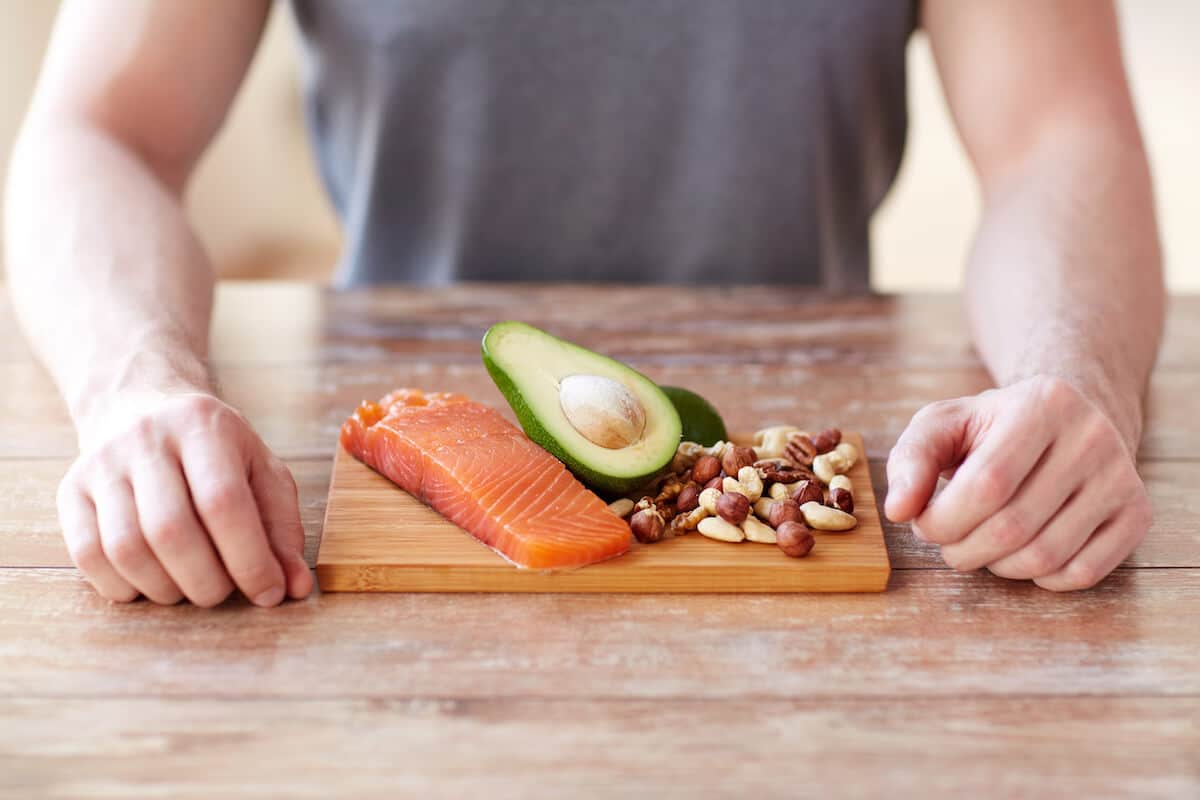
Healthy eating is an integral part of keeping your body in the best possible shape. If you want to lose weight or build muscle, high-protein, low-calorie foods are the way to go.
Mix and match animal protein sources like chicken, beef, fish, eggs, and dairy with plant-based sources like legumes, seeds, and nuts. Then top up your total protein intake with a quality protein supplement. The extra protein will give your body just what it needs to get your weight and muscle mass exactly where you want it.


